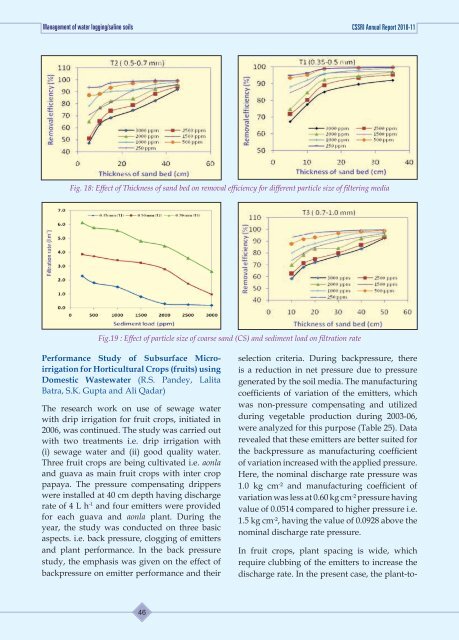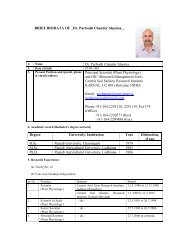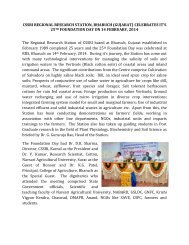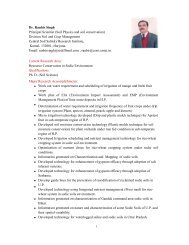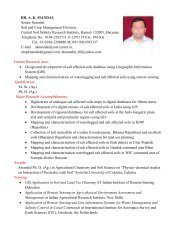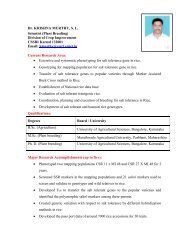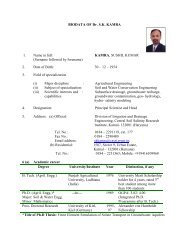CSSRI Annual Report 2010-11 - Central Soil Salinity Research ...
CSSRI Annual Report 2010-11 - Central Soil Salinity Research ...
CSSRI Annual Report 2010-11 - Central Soil Salinity Research ...
You also want an ePaper? Increase the reach of your titles
YUMPU automatically turns print PDFs into web optimized ePapers that Google loves.
Management of water logging/saline soils <strong>CSSRI</strong> <strong>Annual</strong> <strong>Report</strong> <strong>2010</strong>-<strong>11</strong><br />
Fig. 18: Effect of Thickness of sand bed on removal efficiency for different particle size of filtering media<br />
Fig.19 : Effect of particle size of coarse sand (CS) and sediment load on filtration rate<br />
Performance Study of Subsurface Microirrigation<br />
for Horticultural Crops (fruits) using<br />
Domestic Wastewater (R.S. Pandey, Lalita<br />
Batra, S.K. Gupta and Ali Qadar)<br />
The research work on use of sewage water<br />
with drip irrigation for fruit crops, initiated in<br />
2006, was continued. The study was carried out<br />
with two treatments i.e. drip irrigation with<br />
(i) sewage water and (ii) good quality water.<br />
Three fruit crops are being cultivated i.e. aonla<br />
and guava as main fruit crops with inter crop<br />
papaya. The pressure compensating drippers<br />
were installed at 40 cm depth having discharge<br />
rate of 4 L h -1 and four emitters were provided<br />
for each guava and aonla plant. During the<br />
year, the study was conducted on three basic<br />
aspects. i.e. back pressure, clogging of emitters<br />
and plant performance. In the back pressure<br />
study, the emphasis was given on the effect of<br />
backpressure on emitter performance and their<br />
selection criteria. During backpressure, there<br />
is a reduction in net pressure due to pressure<br />
generated by the soil media. The manufacturing<br />
coefficients of variation of the emitters, which<br />
was non-pressure compensating and utilized<br />
during vegetable production during 2003-06,<br />
were analyzed for this purpose (Table 25). Data<br />
revealed that these emitters are better suited for<br />
the backpressure as manufacturing coefficient<br />
of variation increased with the applied pressure.<br />
Here, the nominal discharge rate pressure was<br />
1.0 kg cm - ² and manufacturing coefficient of<br />
variation was less at 0.60 kg cm - ² pressure having<br />
value of 0.0514 compared to higher pressure i.e.<br />
1.5 kg cm - ², having the value of 0.0928 above the<br />
nominal discharge rate pressure.<br />
In fruit crops, plant spacing is wide, which<br />
require clubbing of the emitters to increase the<br />
discharge rate. In the present case, the plant-to-<br />
46


